It had been about five minutes since we were standing at the chowk (square), staring in admiration, at the jalebi batter being swirled into the spluttering desi ghee (slow-cooked clarified butter), when someone interrupted our utterly sweet dreams and wonder-eyed gaze. “Kuch special khilaun? Try karoge?” (Would you like to try something special?) Som Moudgil ji, the second generation owner and senior craftsman of Gurdas Ram Jalebi Wala probed.
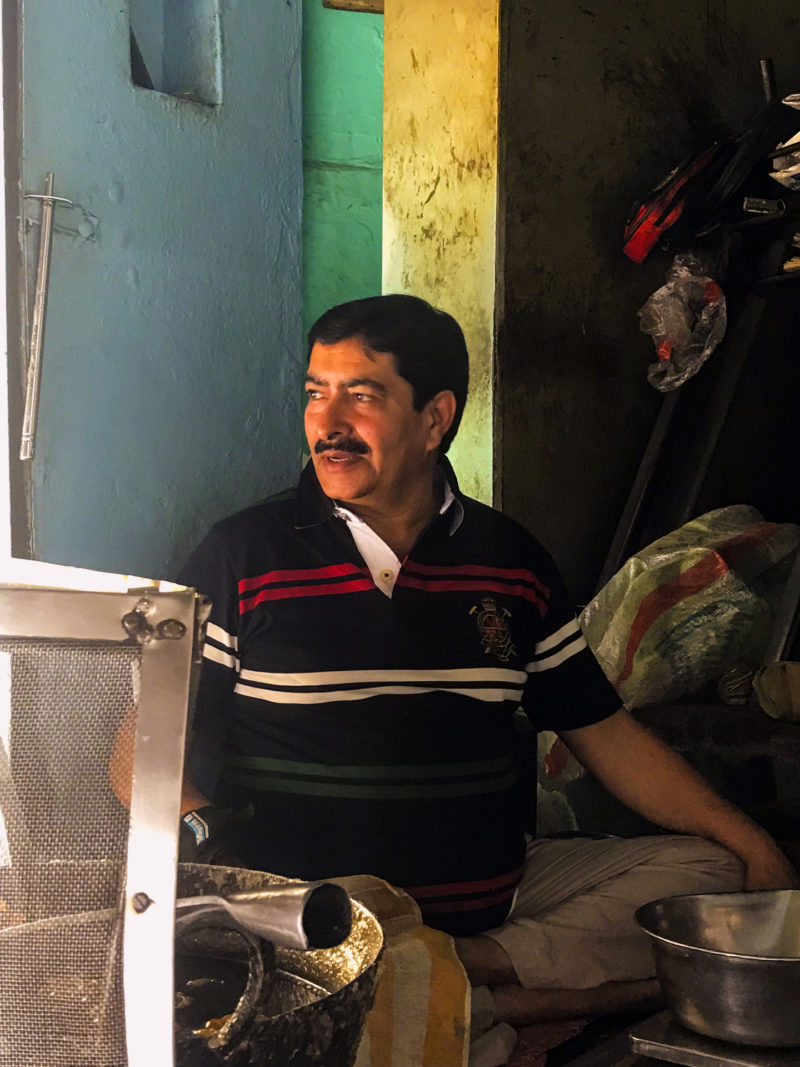
Gurdas Ram, despite the glory it enjoys amongst locals, travellers and food enthusiasts, exudes modesty and old-world charm. The small shop is situated along a rounded corner at the intersection of a number of streets, its countertop and signage follow the same curved shape making the shop easy to miss as one would least expect to find it here. But as you’re turning around the corner, the feastly aroma draws you towards it.
Determined to try what we came for and leave quickly, I responded, “Nahi, bas ek plate jalebi de dijiye” (no, just one plate of jalebi please). The last two days had been an unending episode of gluttony and we had yet again given in to our temptations. The four of us decided to share a plate and move on.
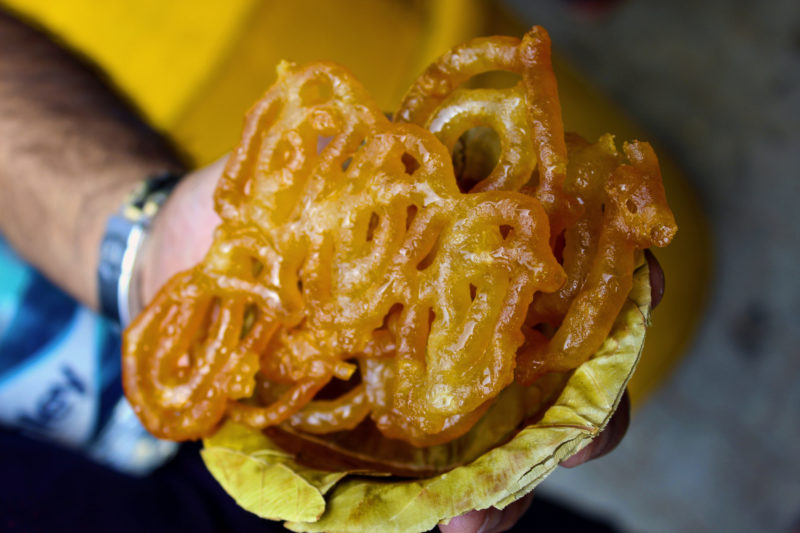
For the uninitiated – the jalebi is a popular Indian sweet, prepared from a batter of all-purpose flour. The batter is fermented for a day, then poured into muslin piping bags and swiftly piped into simmering desi ghee in spiral shapes, deep fried until it’s a glistening golden colour and then dunked into hot chashni (sugar syrup). Once doused in the chashni, it is pulled out within seconds to retain its crispness and should ideally be relished instantly while it’s hot and crackling.
Som ji stacked a few jalebis in a dona (leaf bowl)and passed it over the counter where a vessel filled with hot gulab jamuns caught my visual and olfactory attention. My three friends were already vehemently signalling at me to stick to the plan.
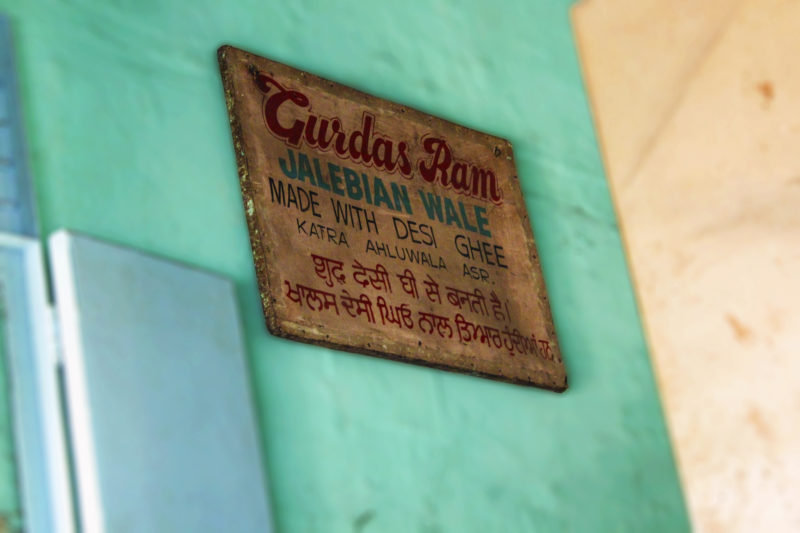
Ignoring the gulab jamuns that had extended a personal invitation to us, we carefully picked up the hot and sticky jalebis with our fingertips and took a bite. Now, there are jalebis that are thin, brittle, often tinted with bright orange colouring that look like picture perfect coils made out of glass; run a google search and that’s how you would expect your jalebi to look. Then there’s Gurdas Ram’s – like doodles of batter, varying in thickness, artlessly golden. The irregularity in shape lends this jalebi its many textures, making it crispy in some parts with an oozy soft centre. It doesn’t expect to be photographed, but since almost a hundred years, it has striven to set a benchmark for taste and genuineness, and it unquestionably lives up to that expectation. What we sampled, was the result of pure ingredients, meticulous proportions, right timing, years of experience and most importantly, the taste of pure desi ghee.
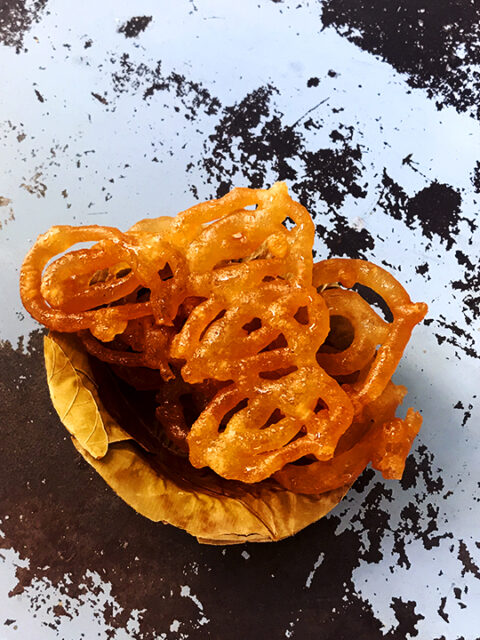
The jalebis had a deep, decadently sweet flavour from being soaked in a rich composition of ghee and chashni, with a slight undertone of sourness from the fermentation. We ordered another plate, our jaws half dropped in disbelief at how a sweet that had tasted more or less the same all our lives had presented itself in such true form that it defined the philosophy of Amritsari food for us – that while the term authenticity is as ambiguous as the correct recipe itself, the veteran dukaans (shops) of Amritsar know no mediocrity, adulteration or frugality; as though they have taken it upon themselves to actualize the notion of purity and great quality as far as possible.
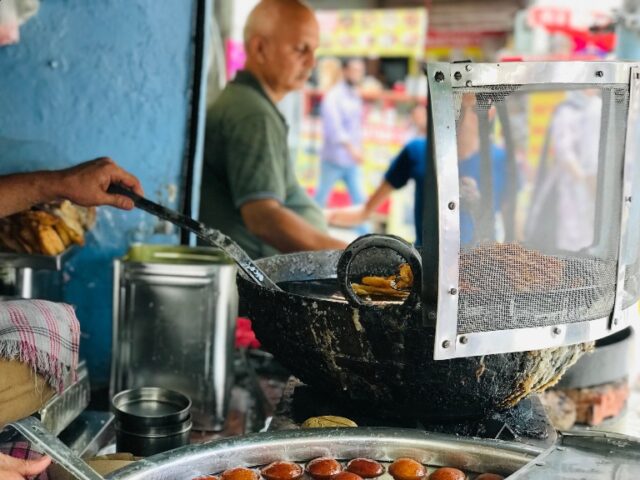
While we were greedily feasting on our second plate of jalebis, Som ji handed us another specialty from his treasured nectarous innovations and insisted “khaake dekho,” (just try it), pretending to be hesitant, I almost snatched it. It was a mathi. A popular evening tea snack – the mathi or mathri is a dry, crusty, savoury cracker or biscuit that crumbles in a bite if it’s fresh. Traditionally prepared with flour, semolina, yogurt and ghee, it has many variations and is available in parts of Northern and Eastern India.
This mathi looked glossy and smelled candied, like a warm, syrupy pretzel. It was dipped into the stewing sugar syrup, seconds before serving. There was a fleeting suggestion of sweetness until the texture of fresh salted cookie underneath the thin lacing of viscous sugar crumbled open. And at last, the goodness of ghee revealed itself, leaving a lingering fragrant memory of its comforting nature. This was, by far the most genius modification of the mathi we had stumbled upon.
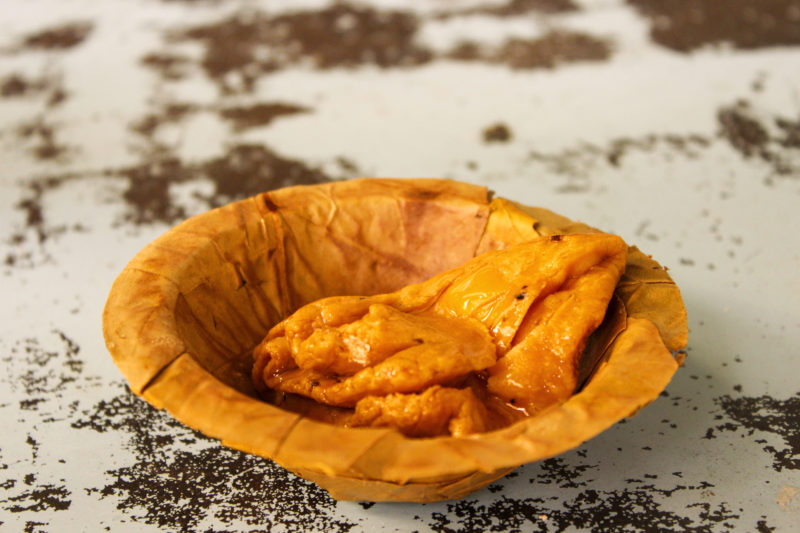
Not surprised by our awestruck faces and hurried praises, Som ji said, “maine pehle hi aapse pucha tha, kuch special try karoge? Aapne mana kardiya,” (I asked you earlier, if you’d like to try something special, you refused). We smiled back guiltily and asked what he calls this snack and he answered like a true inventor, “rasbhari, isse rasbhari kehte hain, aur hum ye kuch hi special customer ko khilate hain, aise sabko nahi bechte,” (Rasbhari, we call it rasbhari, and we give it only to very few special customers, we don’t sell it. Rasbhari literally translates to Ras– nectar, bhari– filled.) This was indeed special, and I know that because I checked the menu again to be sure rasbhari wasn’t on it.
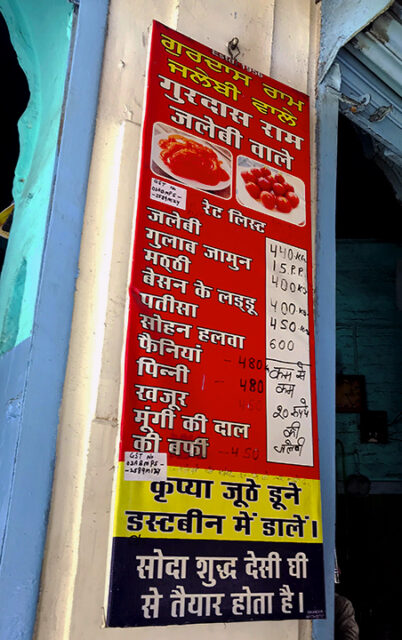
Just when we thought the spectacle was over, a kid hopped over to the shop and ordered something. I was quite sure it wasn’t something new when Som ji hurriedly instructed, “Abhi jo banega, uska video nikalo,” (Shoot a video of what we’re about to make now). Puzzled, I hastily turned on the video recording. The chef started to swirl into the ghee, what seemed like another jalebi, except, this time he made a giant version, about the size of a regular pizza. Som ji started narrating a story of when he was in Delhi and had first created this deep fried sculpture called ‘jaleb’. The chef still piping coils of the jaleb prompted, “jalebi ka bhai, jaleb” (jalebi’s brother, jaleb). In Amritsar, bonding over culinary emotions is inevitable and hence a family sized jaleb for Sunday afternoon dessert unions is only a sensible and necessary invention.
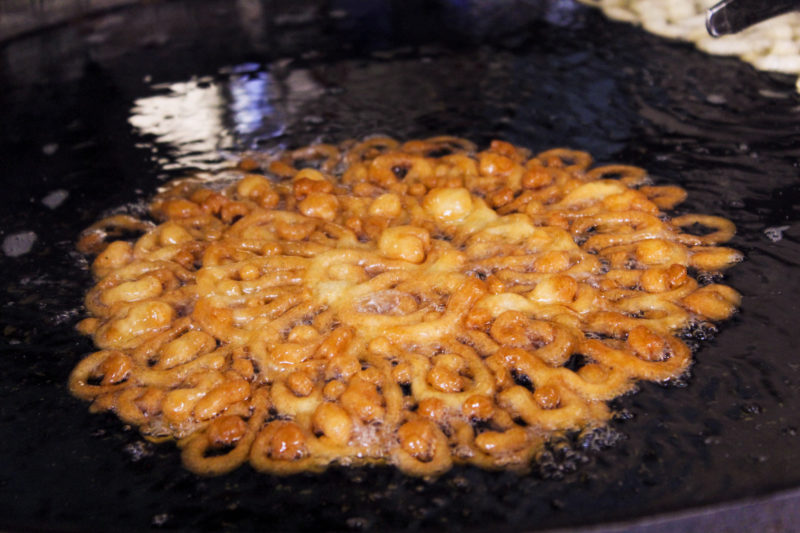
Meanwhile, Som ji – who wasn’t done yet – stacked a few jalebis without dipping them into the sugar syrup and handed it to the aam papad (dehydrated mango) vendor, whose cart was stationed outside Gurdas Ram.
The vendor sprinkled some chaat masala (a mix of Indian spices) on the unsweetened jalebis and passed the dona to us. While the idea of a savoury jalebi seemed unappetising, we tried it anyway and just like Gurdas Ram’s many creative geniuses, the ‘pheeki jalebi’ (unsweetened jalebi) was a pleasant surprise. It left a tangy, spicy impression on the palette, cleverly managing any weighty aftertaste of all that sweet.
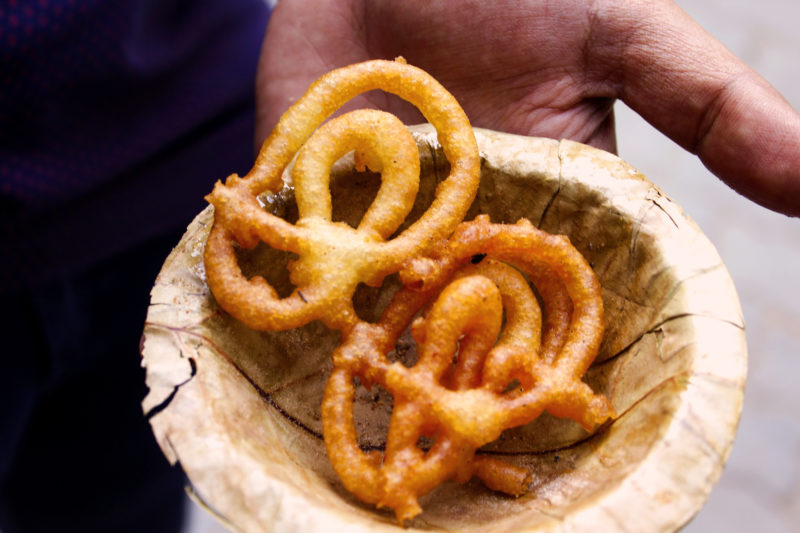
We left from Gurdas after our many courses of snacks and dessert, still wondering what we had missed by not trying their gulab jamun. After regretting for a total of 24 hours, we returned the next day. Even with no time to visit any more places, we sprinted back and quickly ordered a plate of gulab jamun. Som Moudgil’s brother Rajesh Sharma was the day’s chief and a different assistant was seated at the jalebi station.
We gushed about our visit the day before and how we regretted not trying the gulab jamun. He nodded, as if approving our decision and handed us a dona with two pieces.
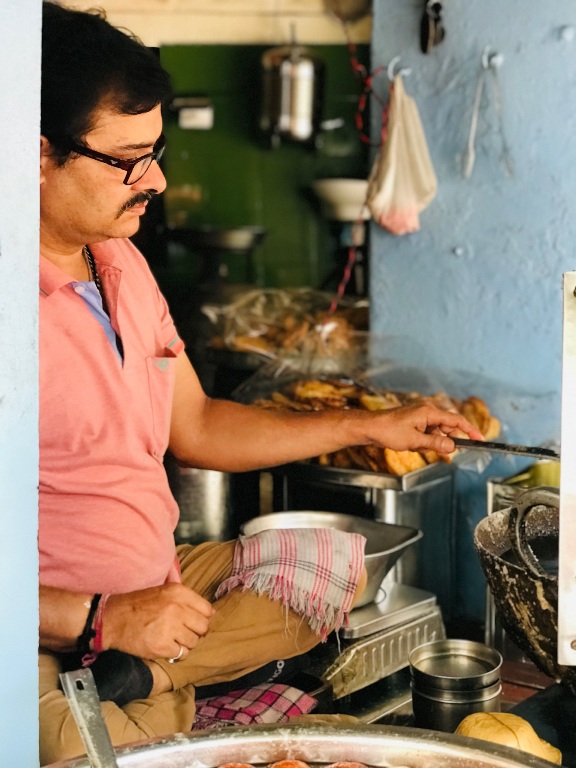
Gulab Jamun is a spherical, lusciously soft sweet prepared by slow cooking milk until the water evaporates and the milk curdles and almost solidifies into what is known as khoya or mawa. The mawa is then mixed with some flour and shaped into small spheres and deep fried on low heat. Once they turn into a glistening brown colour, they’re soaked in runny sugar syrup, fragranced with rose water, saffron or cardamom.
The steps are few, but gulab jamun is a traditional Indian sweet and thus richness of ingredient, slow cooking and attention to method is crucial to its preparation, something we learnt from our gulab jamun tasting at Gurdas Ram. We realised how we had been celebrating substandard gulab jamun all our lives, pairing it with vanilla ice-cream at weddings, or eating cold gulab jamun straight out of the fridge at times.
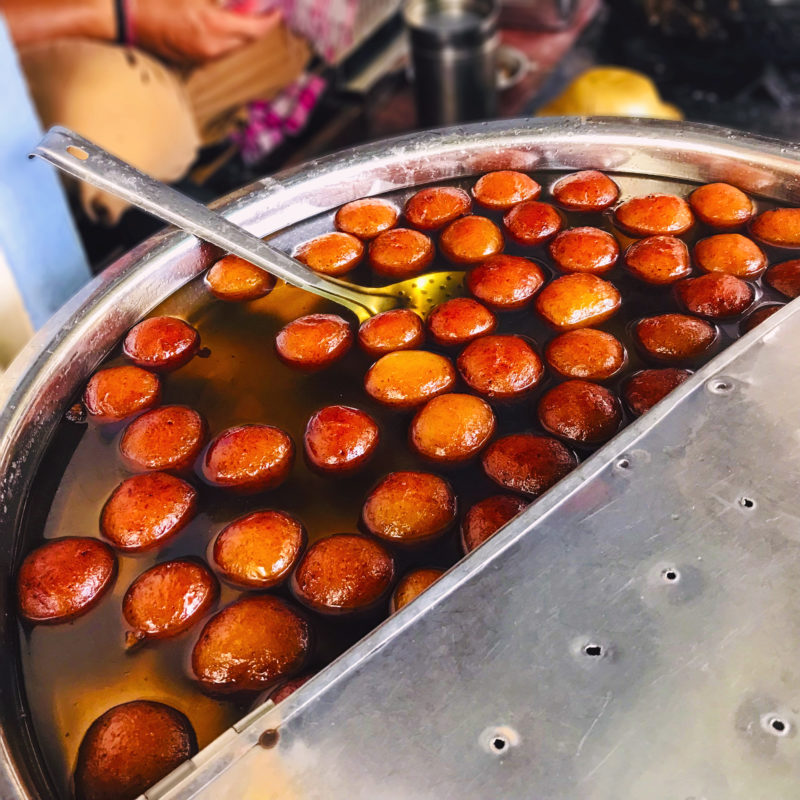
We asked Rajesh ji how their gulab jamun was made and he gave us some game-changing revelations. The gulab jamun at Gurdas Ram is said to be made with milk that has five and a half portions of cream as opposed to three or lesser portions that the best of places use. Some places also make do with milk powder or milk left after using up all the cream but Rajesh ji could have crossed his heart when he said, “we use only pure full cream milk.” When you hear such a statement from culinary veterans sitting at some nook like this, you believe them, because they’re unaware of your reviews, because they have no interest in fame fads, because they’re old school, because they’re stubborn, because they could never catch up with adulteration. And because they speak of food with years of respect for the ingredient and process, a respect that is contagious and evidently holy. They never flinch in doubt about the purity of their raw material or where it comes from.
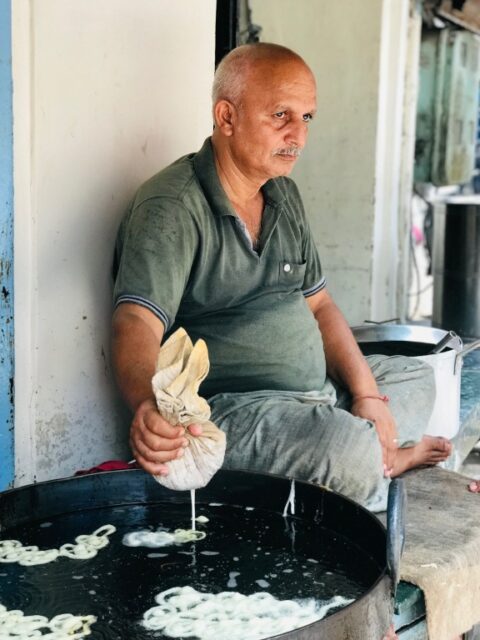
The little tricks of food wizardry and casual talk that incidentally happened at Gurdas Ram are the kind of anomalies that hold intangible treasures of Indian culinary craft. Their knowledge of what works together, the creativity to combine everything in perfect proportions and the cleverness to create a charming confusion of flavours that leaves the taster awestruck is just their culture, not an acquired skill. And when they tell you their stories full of wisdom, it’s not gimmicky, it’s not intentional. In fact, they are blissfully unaware of the memorable emotive experience they create for the customer, and that’s precisely what makes it worth the mention.
Translations and detailed descriptions are provided to give a better understanding of the story to people from different cultural backgrounds across the globe.

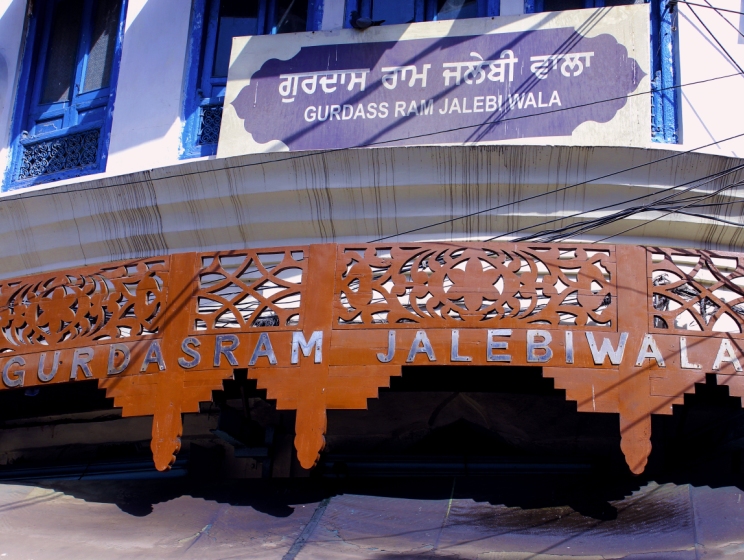
Very well written
Thank you for the appreciation. Stay tuned for more such stories!
Can’t wait to try it😬.
So well written 😍
Thanks. We too! Can’t wait to go back. 🙂
Beautifully written. Perfectly captures the romance that all of india has with its savouries and sweets. Great to see an initiative highlighting local heroes such as Gurdas Ram. Will wait for more
Appreciate you taking the time to read the story. Our narratives attempt to spotlight such lesser known gems and help more people learn about them. Thank you for being part of the community, more stories coming your way!
Very well written. Your pursuit to find hidden gems like Gurdas Ram, who are the true flag bearers of what Indian cuisine is all about is novel.
Thank you for the appreciation! More such stories coming your way. 🙂
Thanks for sharing these details as u have written our family business in your golden words. So thankful. And people who will visit our shop will definetly experince a good eatry abd thanks to those who have paid a visit.
Thank you, Pallavi. Happy to know that our story could even come close to describing the genius of Gurdas Ram. Hope to meet you when we visit next!
Gurdas Ram’s sweets are really unanswerable.
Luckily, I stayed there for a week with my colleagues in 2018,at that time we knew about it. After that, whenever we have to go to Amritsar, we must come there for specially Jalebi and bring it with also…
May Allah prolong their life and grant them further development ..
Thank you for sharing your experience! Gurdas Ram is definitely worth many visits. 🙂
Very well written, Really good taste
Thank you so much! Glad you liked the story.